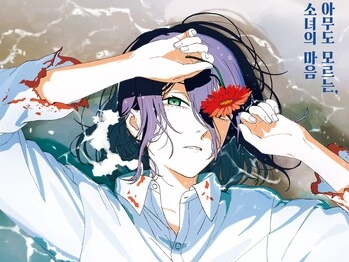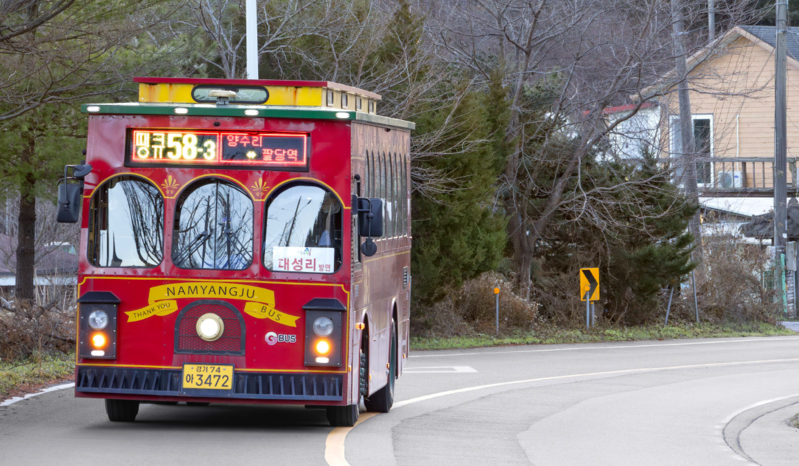 |
(The following article was translated into English by artificial intelligence.)
Wintertime always feels like a time to quietly return to oneself.
For exam-takers, parents of students, office workers, and self-employed individuals alike, it's a time to welcome the new year with vigor. However, as prices rise and consumers' pockets tighten, many hesitate to spend big money on travel.
At times like these, why not take a trip to the nearby suburbs for some fresh air? If you look around a bit, you'll find surprisingly nice travel destinations.
Travel also requires a change of mindset. Taking a simple trip around the city center by hopping on the subway that runs through the capital area isn't a bad idea either. The Gyeongui Line, which runs between Gyeonggi Province and Seoul, could be another means for Seoul citizens to enjoy the suburbs of Gyeonggi Province. Just 40 minutes from Cheongnyangni Station is Namyangju's Joan-myeon. Riding the quaint “trolleybus” to a small rural station, is definitely the cream of the trip, full of coziness that cannot be felt in the urban bustles.
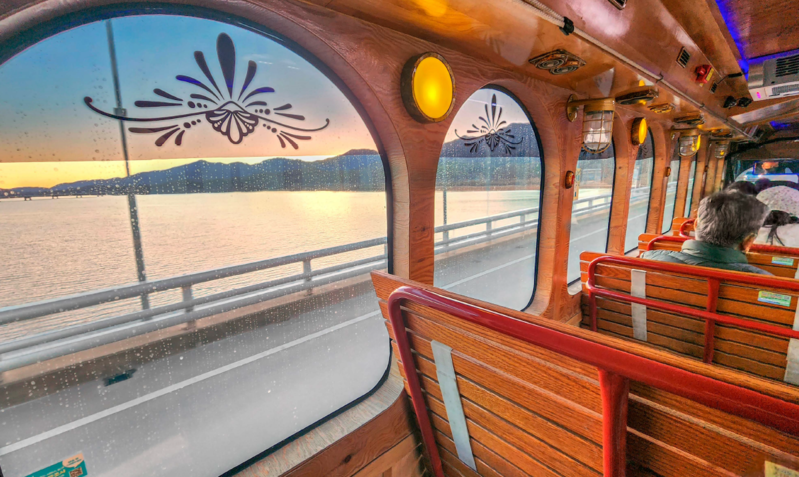 |
City tour bus in the countryside
After getting off at Ungilsan Station on the Gyeongui Line, walk about 50 meters, and you'll come across a bus stop. After waiting for a few minutes, a trolleybus, similar to those seen in Seoul, pulls up. The bus is adorned with a deep red exterior, and inside, wooden chairs are installed. Trolleybus typically refers to electrically operated tramcars in Europe, but domestically, the term is used to refer to tourist buses that apply the design to regular buses.
In Namyangju, this bus is used not only as a tourist bus but also as a city bus. While local governments like Seoul have introduced them for city sightseeing purposes, this is the first time Namyangju City has operated public transportation. The city has named this bus the “Thank You Bus.” The city utilizes the Thank You Bus as both a regular city bus and a tourist bus for its citizens.
Tourist-only buses somehow feel dull because there's no chance to encounter residents. However, this Thank You Bus is different. Tourists can mingle with Namyangju citizens and catch a glimpse of their daily lives.
The interior of the Thank You Bus is also quaint. The interior design, meticulously crafted with wood, exudes a travel vibe. The windows are also not rectangular, but arched at the top. If you hop on the Thank You Bus and leisurely enjoy the scenery outside, you'll arrive at your destination -- Neungnae Station -- in about 20 minutes.
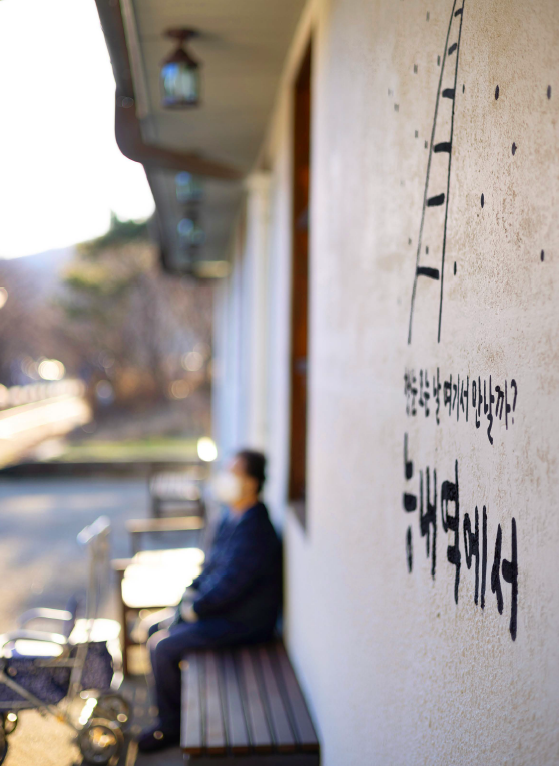 |
Namyangju Neungnae Station
Neungnae Station is a small abandoned station where trains no longer stop. Traveling to abandoned stations has a sweet charm to it because you can find faint memories from your childhood that you've forgotten. Although not plentiful, you can encounter images of the past overflowing with familiarity. Neungnae Station started as a “station without a stationmaster but with personnel” in May 1956. It gained the status of an “ordinary station” with a stationmaster in 1967, but in 1993, it was downgraded to a “station without a stationmaster” again. Then, when the tracks were relocated in 2008, it closed its doors.
The attention to this history began about a decade ago when a bicycle path replaced the railroad as part of the Four Major Rivers Restoration Project. Many cyclists began to notice Neungnae Station as they passed through.
Neungnae Station is a small single-story station. It's like a beloved hometown house. As you enter the small station, the old train schedule is still posted on the door. Black-and-white photos depicting the history of the station adorn the walls. Each photo captures the people who lived here in one way or another. Right in front of the station, you can rent bicycles for 5,000 won per hour, perfect for making wonderful memories. The price hasn't increased much compared to a few years ago.
South Han River bike trail: the charm of winter riding
"Bicycles have entered my heart," reads an advertisement slogan from a fashion brand that was popular in the 1980s. Perhaps unexpectedly, the chilly winter weather is perfect for cycling. The South Han River Bike Trail, stretching 27 km from Namyangju’s Paldang to Yangpyeong, is considered one of the most beautiful bike paths in the country. Riding on the old railroad, now neatly paved, your heart feels refreshed. As you ride a rented bike from the rental shop, you'll soon break a sweat.
One of the must-see courses for riders is the bike path from Paldang Station to Sinwon Station. Among them, the route from Paldang Station to Ungilsan is considered the most attractive. Neungnae Station is included in three out of the eight recommended routes along the South Han River Bike Trail. Along the bike path, you'll notice various signs seemingly aimed at photography. There are benches where you can take breaks and many places to make memories. The nearby “Lee Geun-ho's Handwritten Letter Garden” near Neungnae Station catches the eye with its various sculptures. The Bong-an Tunnel, where trains used to pass, now converted into a bike tunnel, also has its own charm.
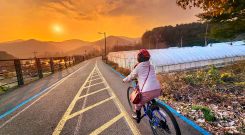 |
Paldang Dam: nation’s No. 1 ecotourism destination
As the Thank You Bus passes by Paldang Dam, dozens of photography enthusiasts are diligently taking pictures by the riverside. I got off the bus and walked back one stop. They were setting up their tripods to capture eagles that inhabit this area. From now until February, you can witness eagles swooping down from the sky to catch fish.
To see the eagles catching fish, you need a telephoto lens. Dozens of photographers have set up cameras equipped with telephoto lenses. One of the photographers says, "Since eagles feed only once a day, sometimes we have to wait all day for free." Some used small speakers to lure the eagles with bird sounds. Others were busy capturing various other birds such as kingfishers.
Their presence by the national highway seemed somewhat risky, but their passion was hotter than anyone else's. It made me think that Namyangju City needs to take a little more action regarding ecotourism.
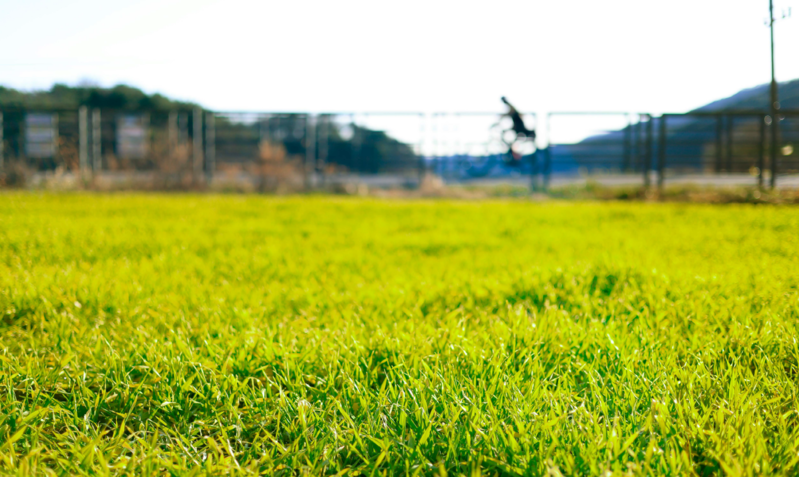 |
Farmer's cafe
Many cafes have sprung up along the Joan-myeon bike path. Many people were riding bicycles along the bike path, and walkers were also quite noticeable. As you look out at the cool river scenery and walk, the stifled feelings in your heart suddenly open up. Many cafes have opened in the area. Among them, there was a cafe that caught my eye, where barley was grown on a large plot of land despite it being midwinter. The blue barley fields create a proper atmosphere and attract people's attention.
This cafe is operated directly by farmers. Middle-aged women come in and say, "I came here because I have memories of eating delicious watermelon in the middle of summer." The cafe owner replies, "My father grows watermelons and melons himself, so you can only drink them during the season." Even on sunny days in winter, you can sit on the outdoor terrace and enjoy the view of the green barley fields while sipping your drink.
Birth home of Jeong Yak-yong
This place is also the birthplace of Dasan Jeong Yak-yong. About 1.6 km from Neungnae Station, you can visit the Jeong Yak-yong Historic Site. After completing a long exile in Gangjin, South Jeolla Province, he returned to his hometown here and stayed until his death. Yak-yong's birthplace, Yeoyudang, has been restored at the Jeong Yak-yong Historic Site. Above Yeoyudang, there's a somewhat steep hill where you can see Yak-yong's birthplace and the surrounding landscape of Neungnae Station at a glance. Atop the hill, there's the tomb of Yak-yong and his wife. In addition, there are many elements around that allow you to learn about the life and philosophy of Jeong Yak-yong.
As the sun sets, returning to Neungnae Station, I see a grandmother sitting at the train station enjoying the sunset. Seeing her lost in thought by the railroad, the play "Waiting for Godot" comes to mind. The sight of the grandmother waiting for a train that never arrives -- just like her elongated shadow in the sunset -- left a lingering impression as long as the shadow itself.
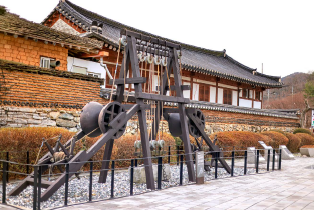 |
(The article was translated into English by artificial intelligence.)
(C) Yonhap News Agency. All Rights Reserved


















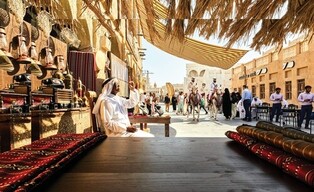



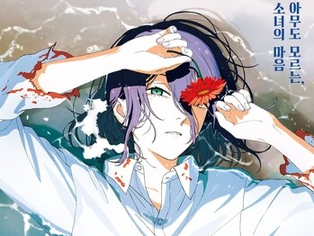

![[가요소식] 보이넥스트도어, 신보로 3연속 밀리언셀러 달성](/news/data/20251025/yna1065624915905018_166_h2.jpg)




